Solarpunk Urbanism: Farms, Forms, Flows and Flux
“2020 was a year of extremes. Continuing environmental degradation—foregrounded by precipitating social upheaval and accentuated by a deadly global pandemic—has revealed just how fragile and, perhaps, discordant humanity has become. Civilization has reached a critical inflection point. And at the threshold between perdition and redemption, loss of hope is easy. Apocalyptic visions and machinations of the future dominate our media. Every day, a new threat—often existential—assaults our screens. Forecasters and even staunch optimists are increasingly challenged to imagine a future that does not include a totalitarian state facilitated by a technological dystopia that failed to prevent a climate catastrophe. In the face of such insurmountable odds, what is the role of the designer, the architect, the urbanist? The answer lies in images.
Our power is to imagine, and then design, new possibilities of the relations between human and nature. And there would be no more timely action then, than to breathe life into a nascent, yet plucky, literary genre known as “Solarpunk” that, having been borne from writers, lacks a cohesive imagery to galvanize the masses. Within this context, solarpunk presents an opportunity to catalyze the words of eco-activists into a global imagination. And within the discipline of architecture and landscape architecture, articulating solarpunk into urban design paradigms that conceptually and formally enmesh pluralism, environmentalism and hope is a timely endeavor. It is said that the best way to predict the future, is to create it. Solarpunk Urbanism tackles a radical vision of future cities.” [1]
Adapted Excerpt:
1. Alberto de Salvatierra, “Solarpunk Urbanism: Farms, Flows, Flux and Flows” Course Syllabus, ARCH 700: Senior Research Studio in Architecture (2020) course at the University of Calgary School of Architecture, Planning and Landscape.
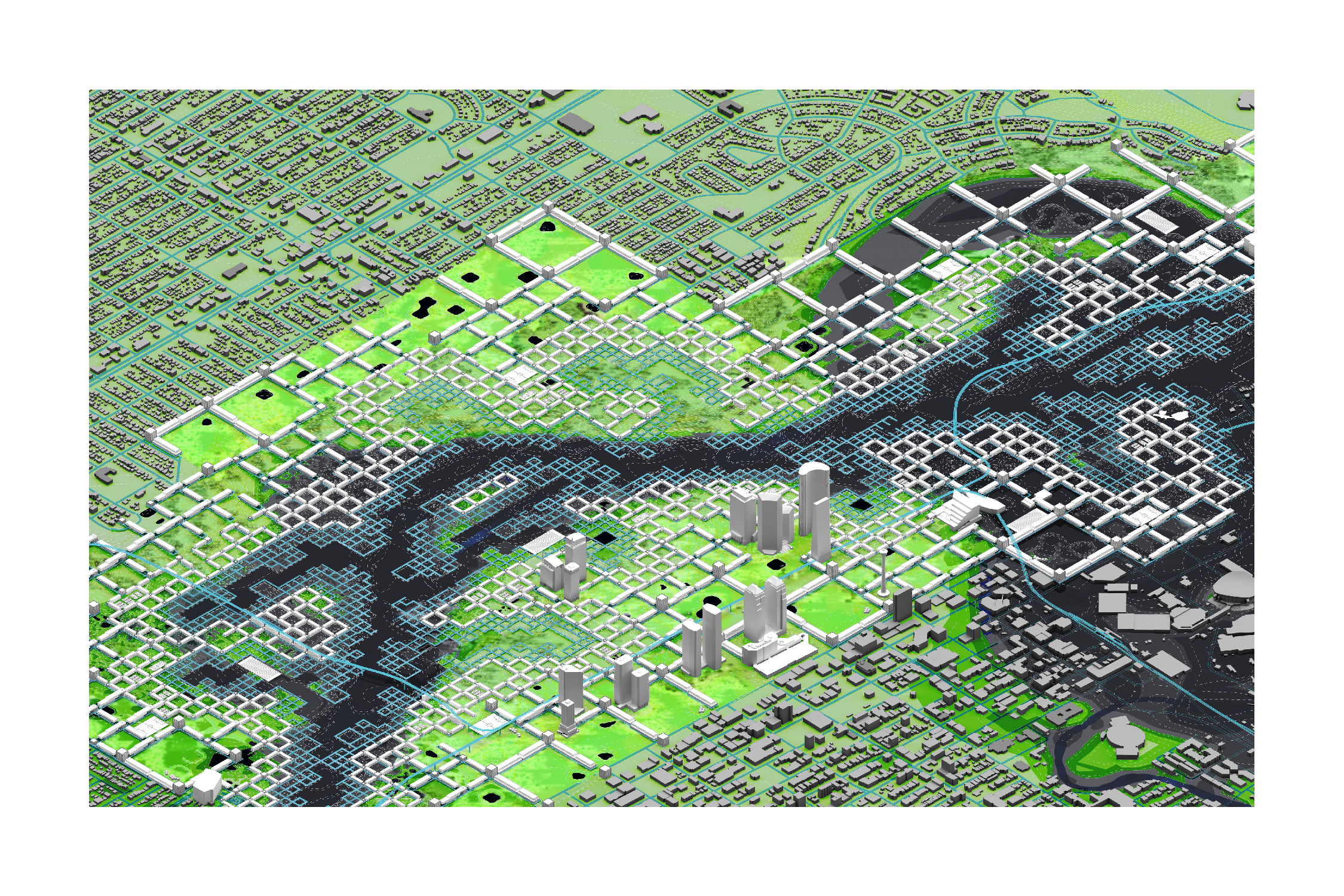
Alexander Mayhew, Co-opting the Grid, City Axonometric, 2020.
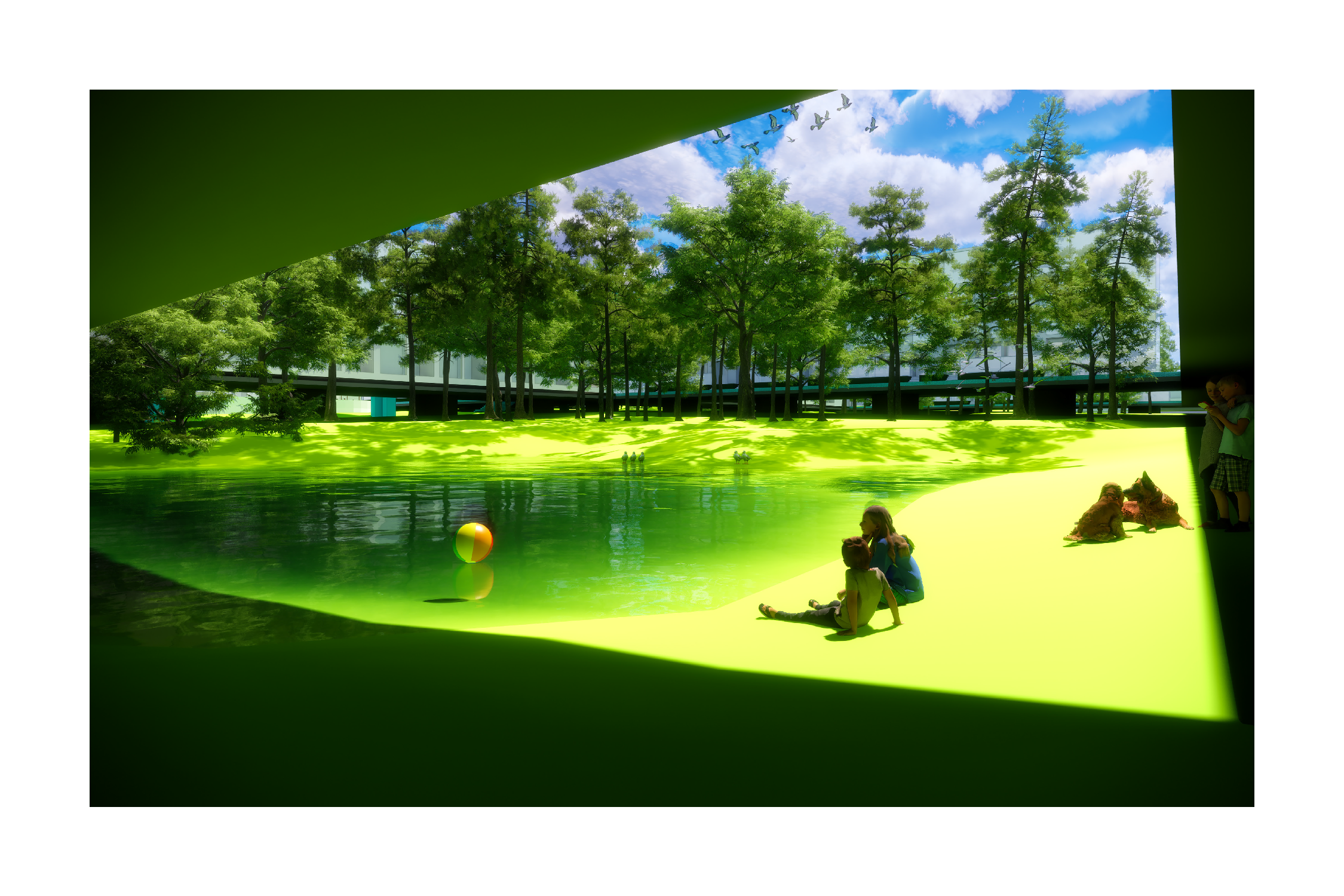
Alexander Mayhew, Co-opting the Grid, Courtyard Perspective, 2020.
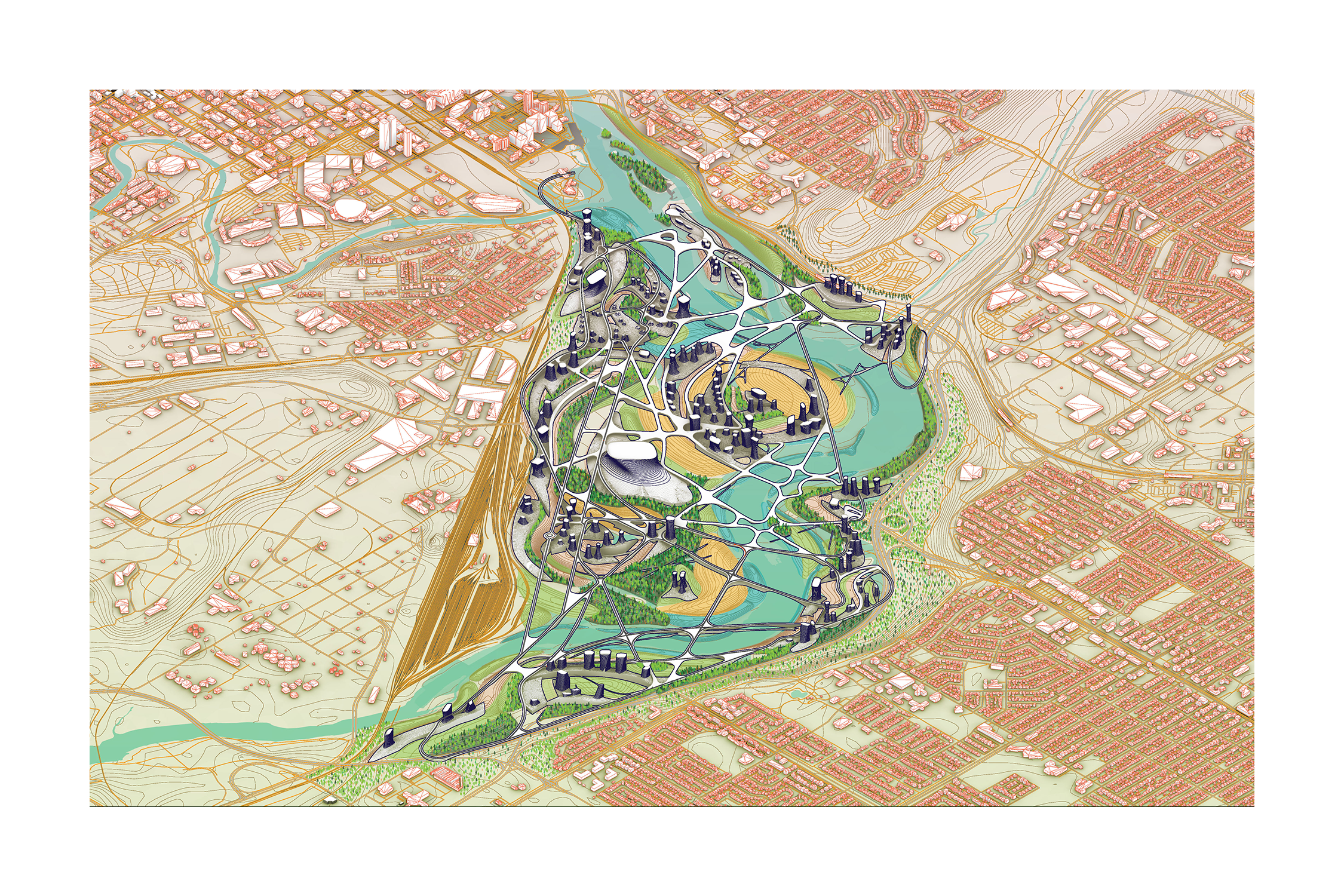
Ji Song Sun, Solar City, City Axonometric, 2021.
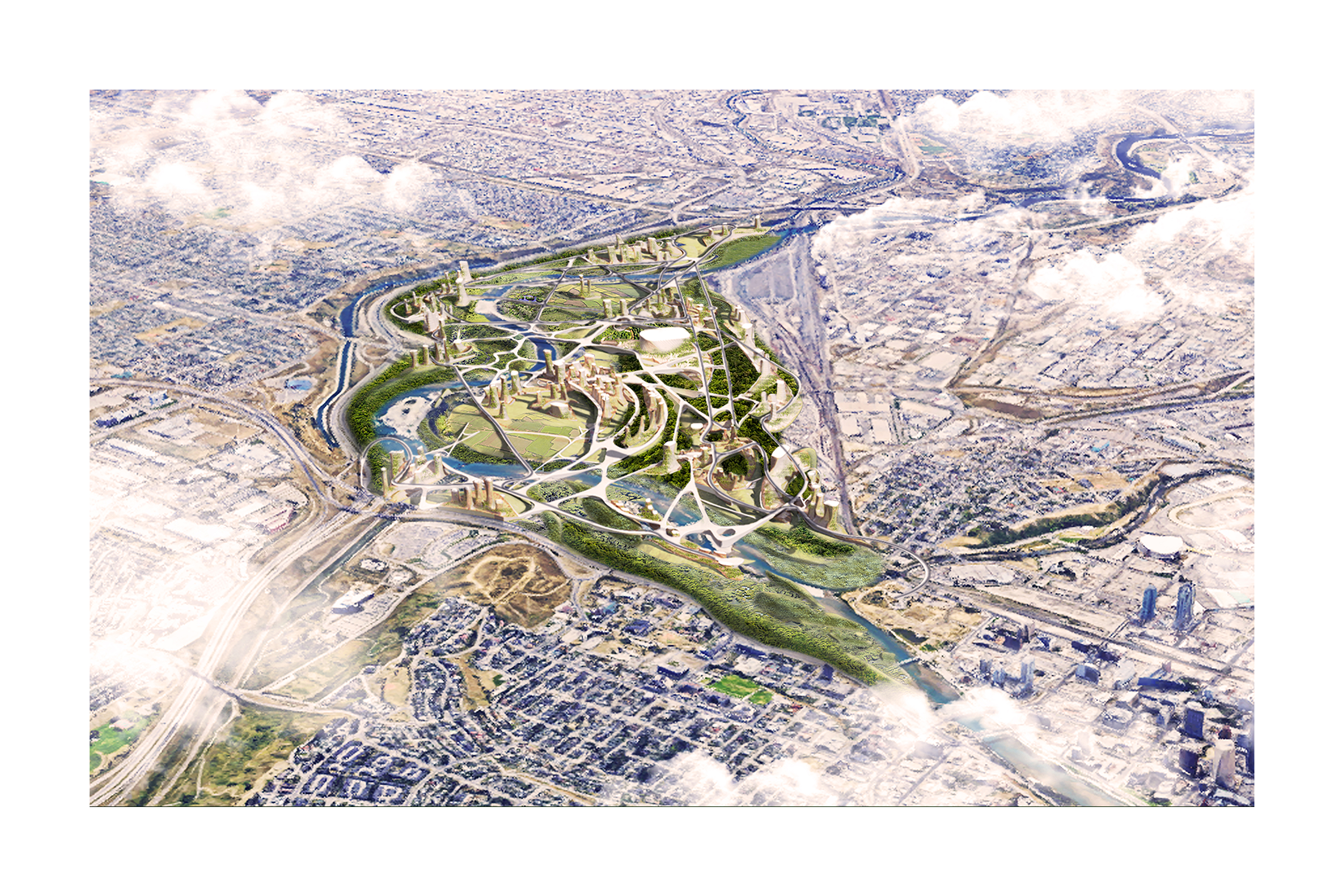
Ji Song Sun, Solar City, Aerial Perspective, 2021.
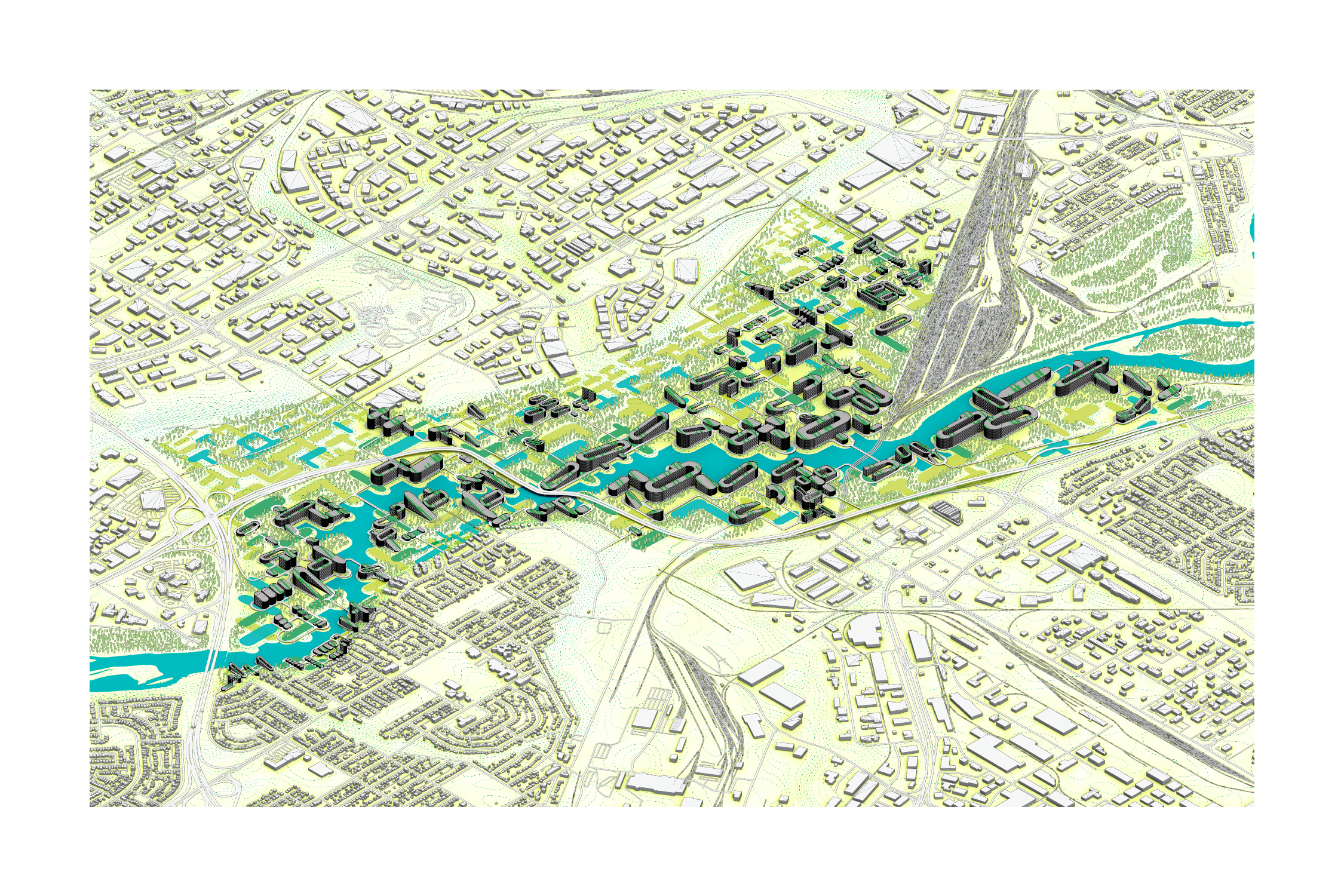
Laura Sandor. City of a Thousand Courtyards, City Axonometric, 2020.
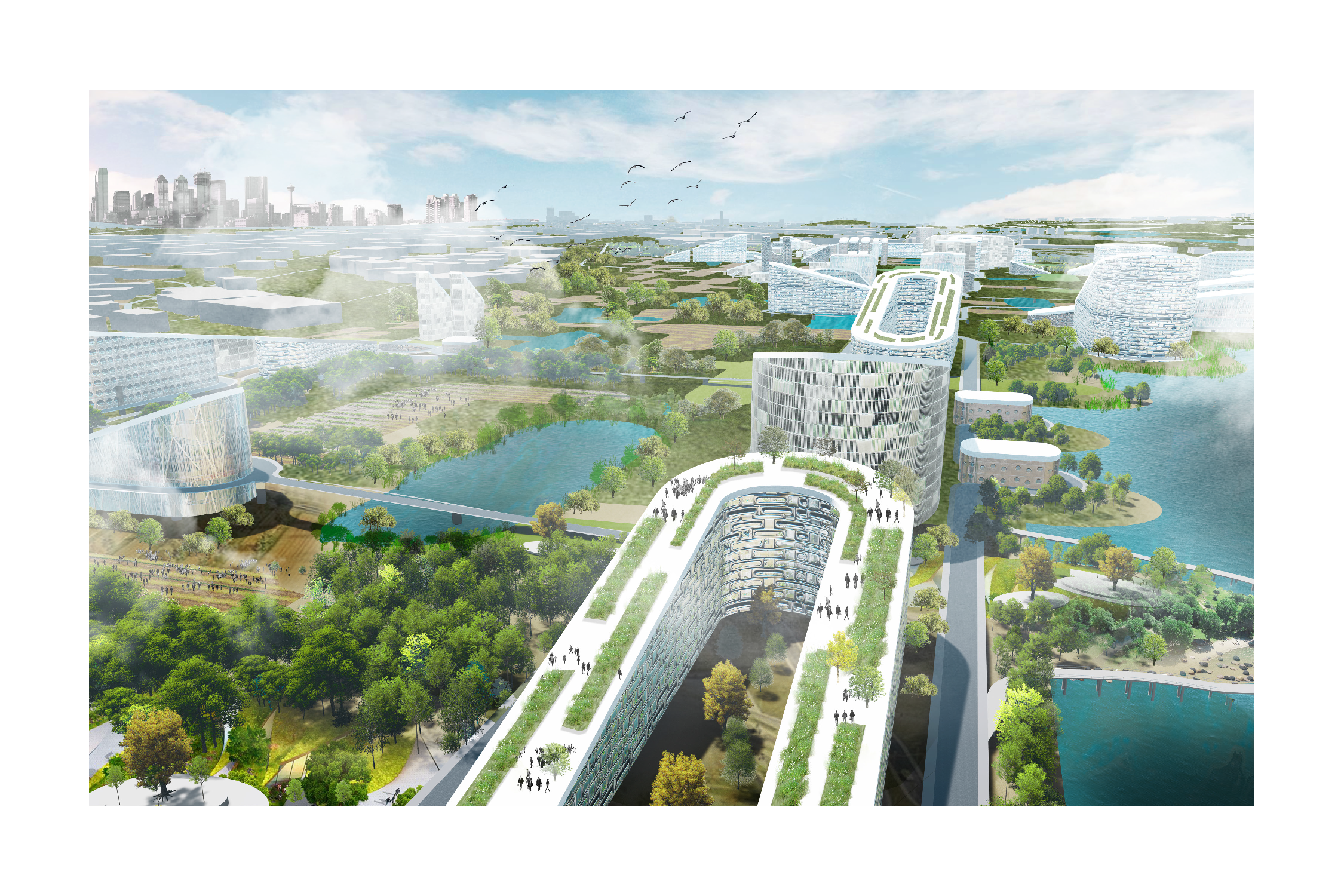
Laura Sandor. City of a Thousand Courtyards, Aerial Perspective, 2020.
Solarpunk Urbanism: Farms, Forms, Flows and Flux
Years: 2019 - Present
Project Type: Research, Pedagogy
Project Team: Alberto de Salvatierra (PI), Laura Sandor, Ji Song Sun, Obinna Ekezie.
Studio Students: Andrew Burnyeat, Natalie Chung, Danielle Kim, Kayla MacDonald, Alexander Mayhew, Gordon Ngo, Edward Park, Anagha Patil, Rejwana Rahman, Alea Reid, Seung Ho Rhee, Laura Sandor, Lealyn San Juan, Mehakpreet Sidhu, Calvin Stuka, Ji Song Sun.
